8 Basic Steps Of Mushroom Cultivation
- April 16, 2024
- 0 comment
Mushroom cultivation, a practice as ancient as agriculture itself, involves nurturing fungi from spore to harvest, a process both complex and rewarding.
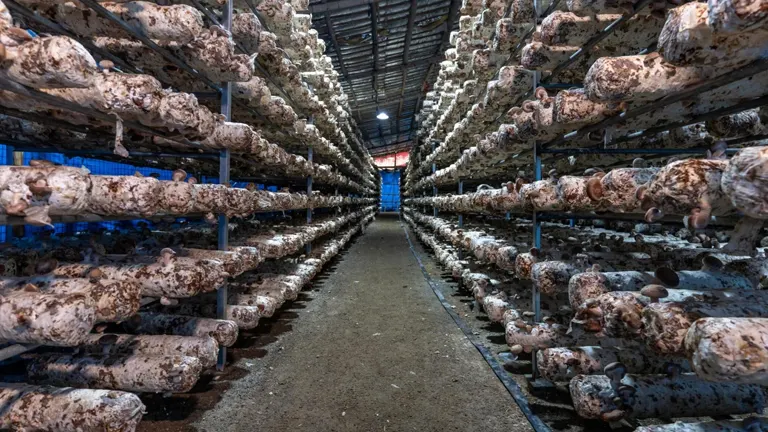
This guide provides a comprehensive look at the intricate steps required to successfully grow mushrooms, a versatile organism revered not only for its culinary versatility but also for its medicinal properties. From the initial selection of robust strains to the precise post-harvest handling, each stage is crucial for achieving optimal growth and yield. With an eye toward sustainability and efficiency, this article aims to equip both novice growers and seasoned cultivators with the knowledge needed to thrive in the dynamic world of mushroom farming.
1. Strain Selection
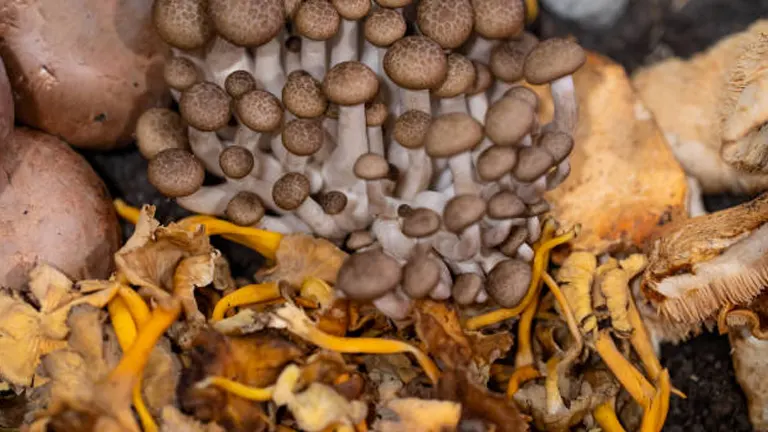
Choosing the right strain for mushroom cultivation is crucial, akin to selecting the best seeds for planting. Each species of mushroom, such as the Pleurotus ostreatus (commonly known as oyster mushrooms), offers numerous strains, each with unique characteristics that influence their growth rate, the appearance of the fruit body, and overall yield.
Selecting a proven strain is essential as it ensures reliability and productivity, significantly impacting the commercial success of mushroom farming. Opting for strains that are well-documented and have shown consistent results in similar environmental conditions can lead to more predictable yields and easier cultivation processes.
Factors to consider in strain selection include:
- Some strains grow faster than others, which can shorten the time from inoculation to harvest.
- Certain strains are known for their ability to produce substantial yields, which is particularly important for commercial growers looking to maximize production.
- The physical characteristics of the mushrooms, such as size, color, and shape, can vary significantly between strains, affecting marketability and suitability for different uses or culinary applications.
- Some strains are more resilient against pests and diseases, reducing the need for stringent sterilization processes and potentially decreasing losses due to contamination.
- It’s crucial to choose strains that are well-suited to the local climate where the mushrooms will be grown, as environmental factors such as temperature and humidity play a significant role in mushroom cultivation.
2. Substrate Preparation
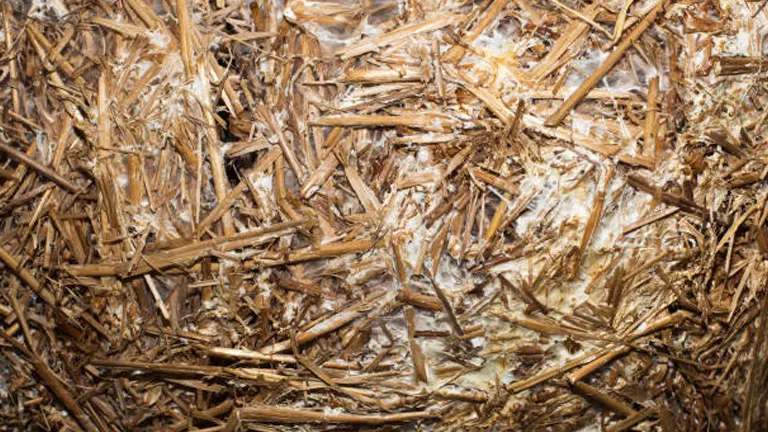
Preparing the substrate is a critical step in mushroom cultivation. The substrate provides the essential nutrients and environment for the mycelium to develop and ultimately produce mushrooms. Common substrates include wood chips, straw, and coffee grounds, each requiring specific preparation to ensure they are conducive to mushroom growth.
Key Aspects of Substrate Preparation
- Proper moisture levels are crucial. The substrate must be moist enough to support mycelium growth but not so wet that it encourages bacterial growth or mold. Achieving the right balance helps ensure healthy mycelium development.
- To prevent contamination from unwanted bacteria and molds, substrates often need to be sterilized or pasteurized. Techniques vary depending on the substrate:
- Sterilization is generally used for nutrient-rich substrates like grain or supplemented sawdust, which are susceptible to contamination. This process often involves high-pressure steam (autoclaving) to kill all potential contaminants.
- Pasteurization is typically used for substrates like straw, which are less nutrient-dense. This can be done through hot water soaking or steam treatment, which reduces but does not eliminate all microbial life, preserving beneficial organisms that can aid in mushroom growth.
- The entire preparation process must be conducted in a clean environment to prevent introducing pathogens that could outcompete the mushroom mycelium. This includes using clean tools and containers for handling the substrate.
Specific Substrate Preparations
- Wood Chips and Logs: These are often soaked to ensure adequate moisture. They should be inoculated soon after cutting to prevent native fungi from colonizing the wood.
- Straw: This commonly used substrate may be chopped and soaked in a lime bath or pasteurized to make it less hospitable to competing organisms.
- Coffee Grounds: Already sterilized during the brewing process, they must be used quickly before other microbes colonize them. Mixing with sawdust can improve their structure and nutrient balance.
3. Creating a Culture on a Petri Dish
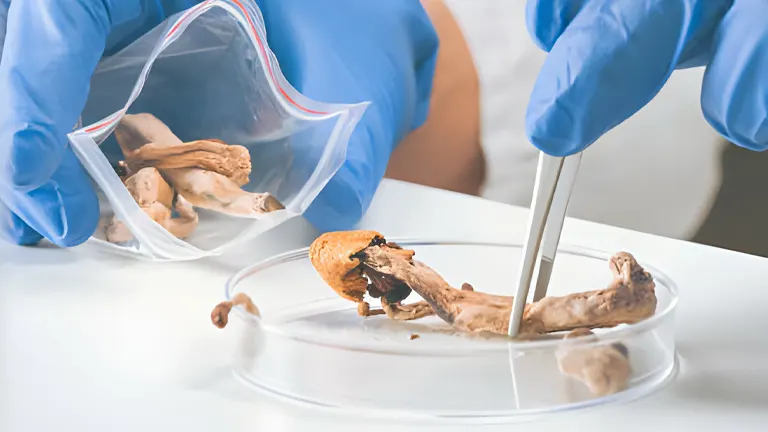
Creating a culture on a Petri dish is a fundamental step in the process of mushroom cultivation. This stage involves using agar, a gelatin-like substance derived from seaweed, to cultivate mycelium under sterile conditions. Here’s how it’s typically done:
Steps to Cultivate Mycelium on Agar
- The entire process must be conducted in a clean and sterile environment to avoid contamination. Any presence of unwanted bacteria or fungi can compromise the growth of the mycelium.
- The process begins by introducing spores or a tissue sample from a mature mushroom to the agar. This can be done by:
- Spore Syringe: Spores are suspended in a sterile solution and dropped onto the agar.
- Tissue Culture: A small piece of mushroom tissue is transferred onto the agar surface under sterile conditions.
- After inoculation, the Petri dish is sealed and placed in an incubator where temperature and other environmental conditions are carefully controlled. The ideal temperature for incubation usually ranges between 20°C to 25°C (68°F to 77°F), depending on the mushroom species.
- Over time, the mycelium begins to grow from the spores or tissue, forming a network of white filaments that spread across the agar. This growth period is crucial as it establishes the health and viability of the mycelium for further cultivation steps.
Purpose and Importance
- Starting with a Petri dish allows growers to ensure the culture is pure and free from contaminants. A healthy starting culture is critical for successful mushroom cultivation.
- This method also enables growers to select the most vigorous and desirable mycelium for further propagation and cultivation, optimizing the characteristics of the final mushroom crop, such as yield and disease resistance.
4. Making Grain Spawn

Making grain spawn is a critical step in mushroom cultivation, bridging the gap between creating a mycelium culture on a Petri dish and inoculating a bulk substrate. Here’s a detailed look at this crucial process:
Steps for Creating Grain Spawn
- Grains such as rye, millet, or wheat are commonly used because they provide the essential nutrients and have a structure that supports mycelial attachment and growth. The choice of grain depends on the specific needs of the mycelium strain and the preferences of the cultivator.
- The selected grain is thoroughly sterilized to eliminate any competing microorganisms. This is usually done using an autoclave or pressure cooker, where the grain is exposed to steam under high pressure, ensuring that all potential pathogens are killed.
- The sterilized grain is then inoculated with mycelium from the cultivated agar plates. This process must be performed in a sterile environment, such as a laminar flow hood, to prevent contamination from airborne spores or bacteria.
- After inoculation, the grain spawn is kept under controlled environmental conditions to encourage mycelial growth through the grains. This typically involves maintaining the grain at a stable temperature and humidity level optimal for the specific mushroom species.
- As the mycelium colonizes the grain, it forms a network of mycelial threads that envelop each grain. This fully colonized grain spawn is then ready to be used to inoculate larger quantities of bulk substrate, effectively spreading the mycelium throughout a more extensive medium.
Purpose and Benefits
- Grain provides a compact and nutrient-rich medium that facilitates rapid mycelial expansion.
- Once colonized, the grain spawn is easy to distribute evenly across the bulk substrate, ensuring uniform mycelium growth.
- Grain spawn can be scaled up effectively, allowing growers to produce large quantities of mushrooms from a relatively small initial culture.
5. Inoculating the Bulk Substrate
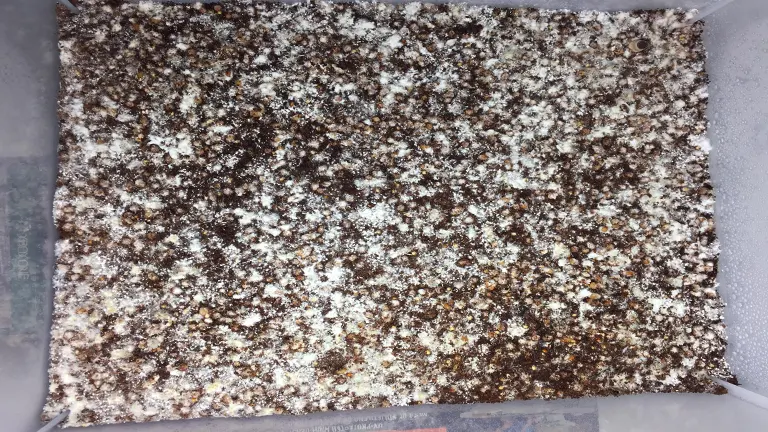
Inoculating the bulk substrate is a pivotal step in mushroom cultivation, where the previously prepared grain spawn is introduced into a larger, nutrient-rich environment. Here’s an overview of the process and its critical aspects:
Steps for Inoculating the Bulk Substrate
- Depending on the type of mushrooms being cultivated, various substrates can be used, such as straw, wood chips, or compost. These substrates are often pasteurized or sterilized to reduce unwanted microbial competition.
- The grain spawn is thoroughly mixed into the bulk substrate to ensure even distribution of mycelium. This uniform spreading is crucial for consistent mycelial growth across the entire substrate.
- After inoculation, the environment in which the substrate is placed must be carefully controlled for temperature and humidity to optimize the conditions for mycelium growth and to prevent contamination. The ideal conditions vary depending on the mushroom species but generally include maintaining high humidity and a temperature suitable for the specific type of mushroom.
- Throughout the colonization of the bulk substrate, conditions are monitored and adjustments are made as necessary to ensure the mycelium remains healthy and active. This might include tweaking the humidity levels, adjusting temperature, or even altering CO2 levels in some setups.
Purpose and Benefits
- By evenly spreading the grain spawn, the mycelium can efficiently colonize the new substrate, utilizing the available nutrients across the entire growing medium.
- Inoculating in a controlled environment allows for precise management of conditions, leading to more predictable mushroom growth and potentially higher yields.
- This step is scalable, allowing mushroom cultivators to increase their production based on the amount of substrate and spawn they are prepared to manage.
6. Colonization
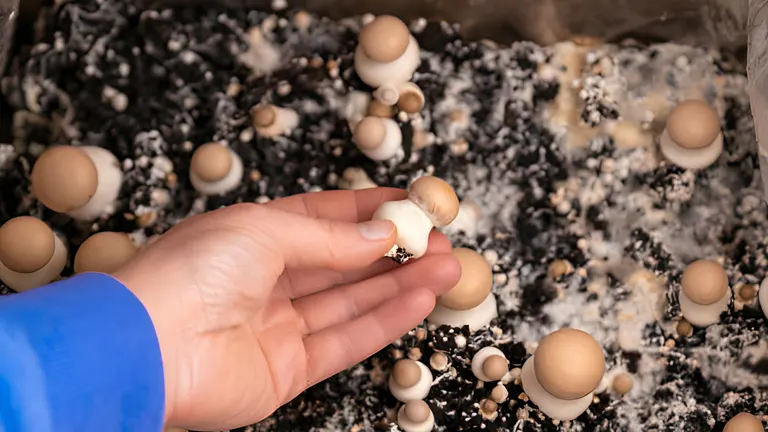
The colonization stage is a critical period in mushroom cultivation where the mycelium thoroughly infuses the bulk substrate, setting the stage for mushroom fruiting. Here’s what happens during this phase and why it’s so important:
Process of Colonization
- After the substrate is inoculated with grain spawn, the mycelium begins to consume the nutrients available in the substrate. It expands by extending hyphae, the thread-like cells that make up the mycelium, throughout the substrate.
- As it grows, the mycelium absorbs nutrients from the substrate, which it will later use to produce mushrooms. This phase is largely unseen, happening within the substrate.
- Colonization requires controlled environmental conditions, particularly consistent temperatures and humidity levels suitable for the specific type of mushroom being cultivated. For many species, this means maintaining a dark, moist, and cool environment.
- The length of the colonization phase can vary widely depending on the mushroom species, the substrate’s composition, and the environmental conditions. It can take anywhere from a few weeks to several months.
Importance of Proper Colonization
- Successful colonization is essential because only well-colonized substrates will produce robust and healthy mushroom crops.
- Proper colonization also helps prevent contamination from molds and bacteria, as a strong mycelial network can outcompete many potential contaminants.
- Effective colonization maximizes the efficiency of nutrient use from the substrate, crucial for high yields in mushroom farming.
7. Fruiting and Harvesting
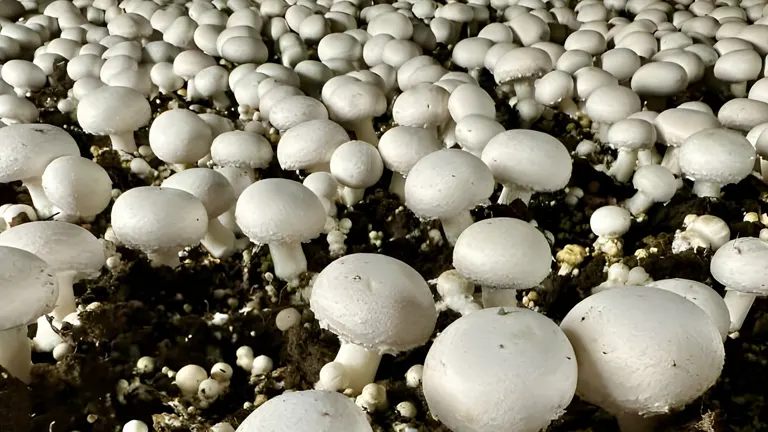
Fruiting Stage
- To trigger the production of mushrooms, growers manipulate environmental conditions such as temperature, humidity, and sometimes light. The specific changes needed can vary by mushroom species. For example, reducing the temperature and increasing air exchange often signals to the mycelium that it’s time to produce fruit bodies.
- Once induced, small mushroom buds, known as pins, will start to appear. These pins will develop into mature mushrooms over several days. Monitoring and maintaining the right conditions during this phase is crucial for healthy growth.
- Mushrooms are harvested at an optimal time to ensure the best quality and size, often just as the caps fully open but before they begin to release spores. The timing of the harvest can greatly affect both the quality and the quantity of the final yield.
Post-Harvest
- Many mushroom species can produce several flushes of fruit from one colonized substrate. Between flushes, conditions are adjusted to reinvigorate the mycelium for further fruiting.
- After it has exhausted its nutrient supply, the spent substrate can often be composted or used as a soil amendment, making mushroom cultivation a cycle of renewal.
Importance of Proper Harvesting
- Efficient harvesting techniques ensure that the maximum number of mushrooms can be gathered without damaging the mycelium, paving the way for subsequent flushes.
- Proper timing and technique in harvesting help maintain the mushrooms’ texture and flavor, which are critical for marketability.
8. Post-Harvest Processing
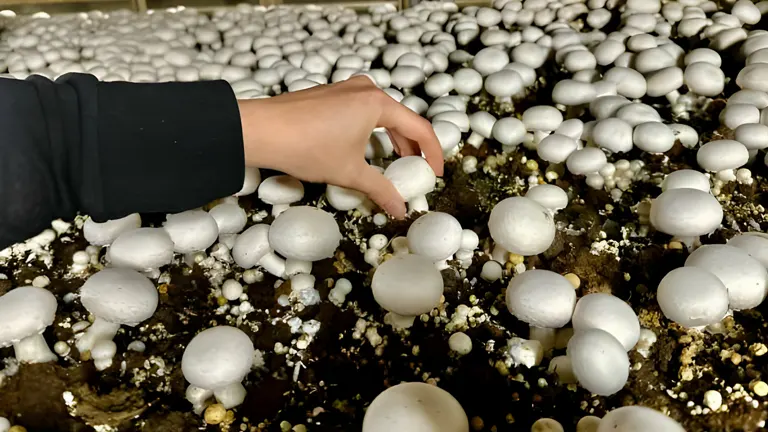
After mushrooms are harvested, immediate steps are taken to ensure their longevity and maintain quality. This stage is crucial for extending the mushrooms’ shelf life and preserving their nutritional value and taste, especially important for market distribution.
Key Steps in Post-Harvest Processing
- Mushrooms are highly perishable, so rapid cooling after harvest is essential to slow down enzymatic reactions that cause decay. This process helps in preserving their freshness and extending shelf life.
- Mushrooms are gently cleaned to remove any substrate particles or debris. However, excessive washing can damage their texture and absorbency, so it’s often minimized or done right before packaging.
- Mushrooms are sorted by size, weight, and quality. This classification ensures that consumers receive a consistent product and helps in pricing according to the quality and intended use of the mushrooms.
- Effective packaging is critical to protect mushrooms during transportation and storage. Packaging materials are chosen based on their ability to maintain the required humidity and allow slight ventilation to prevent the accumulation of ethylene gas, which can accelerate spoilage.
- Storage conditions vary by mushroom species; for instance, shiitake mushrooms are known for their longer shelf life compared to more delicate varieties like oysters. The ideal storage temperature for most mushrooms is around 34-37°F (1-3°C) with high humidity.
- Maintaining the cold chain during transportation is vital to prevent spoilage and ensure that mushrooms reach consumers in the best possible condition.
Importance of Proper Post-Harvest Handling
- Proper post-harvest handling ensures that the mushrooms retain their nutritional quality and visual appeal, which are critical for consumer satisfaction.
- Minimizing post-harvest losses is crucial for the profitability of mushroom cultivation. Effective post-harvest handling can significantly impact the bottom line by reducing waste and increasing the marketable yield.
Varietal Guide: Mushroom Types and Their Uses
Oyster Mushrooms (Pleurotus ostreatus)
- Growing Conditions: Thrive in humid, cool environments and can grow on a variety of substrates including straw, coffee grounds, and sawdust.
- Uses: Known for their delicate texture and mild flavor, ideal for stir-fries, soups, and vegan dishes. Medicinally, they are recognized for cholesterol-lowering properties.
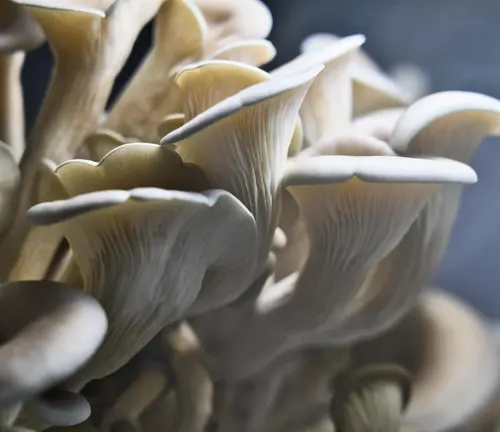
Shiitake Mushrooms (Lentinula edodes)
- Growing Conditions: Best grown on hardwood logs or sawdust at temperatures between 55-75°F.
- Uses: Valued for their rich, buttery flavor, enhancing dishes like risottos and soups. Shiitake are also used in traditional medicine for boosting immunity and overall vitality.
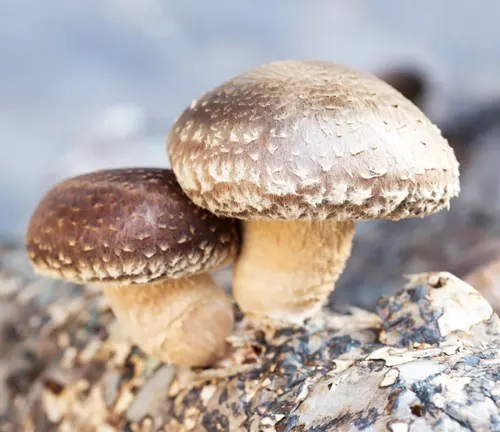
Lion’s Mane (Hericium erinaceus)
- Growing Conditions: Prefers cooler temperatures and high humidity, commonly cultivated on hardwood substrates.
- Uses: Has a seafood-like flavor, often used as a crab or lobster substitute in vegan recipes. Noted for its potential in enhancing cognitive function and nerve repair.
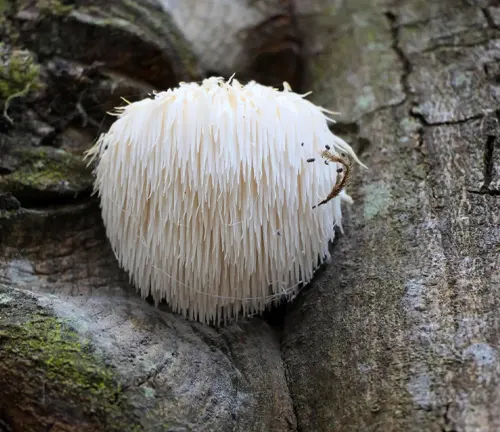
Portobello Mushrooms (Agaricus bisporus)
- Growing Conditions: Grows best in nutrient-rich compost with a controlled temperature range.
- Uses: Popular in grilling and roasting for their meaty texture, making them a staple in vegetarian diets. Rich in selenium and potassium.
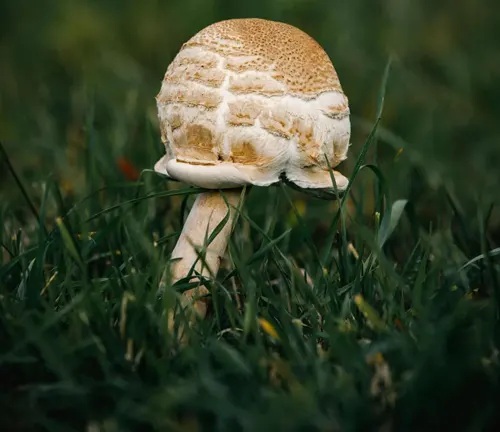
Reishi Mushrooms (Ganoderma lucidum)
- Growing Conditions: Requires a more specific setup with higher humidity and warmer temperatures, often grown on wood or grain.
- Uses: Not typically used for cooking due to their bitter taste but highly regarded in traditional Asian medicine for enhancing immune function and reducing stress.

Chaga Mushrooms (Inonotus obliquus)
- Growing Conditions: Unlike others, Chaga is not cultivated but wild-harvested from birch trees in cold climates.
- Uses: Mainly consumed as a tea, Chaga is prized for its antioxidants and potential to support immune health and lower inflammation.

Troubleshooting Common Problems in Mushroom Cultivation
- Pest Infestations: In mushroom cultivation, common pests include fungus gnats, mites, and springtails, which can significantly hinder growth. To combat these, maintaining cleanliness is crucial to prevent attracting pests. Employing sticky traps can effectively catch fungus gnats, while predatory mites are beneficial for controlling mite populations. Additionally, ensuring proper ventilation helps reduce the excess moisture that attracts these pests, keeping the cultivation environment less hospitable for them.
- Mold and Diseases: Fungal cultivators often face challenges such as Trichoderma (green mold), cobweb mold, and bacterial blotch. To prevent these issues, it’s essential to sterilize all tools and substrates before use. Managing humidity levels and maintaining good air circulation can help prevent mold growth. If contamination occurs, removing infected materials promptly is critical to stop the spread and safeguard the health of the remaining crop.
- Environmental Stress: Challenges like inadequate humidity, improper temperature, and poor lighting can stress mushroom cultures, hindering their development. Utilizing a hygrometer to monitor humidity levels and adjusting with humidifiers or dehumidifiers as necessary can mitigate these issues. Temperature can be controlled with heating mats or fans, depending on the needs of the species. For lighting, indirect natural light or LED lights suitable for indoor cultivation ensure the mushrooms receive adequate light without exposure to harsh conditions.
- Substrate Problems: Issues with the substrate such as incorrect moisture content, nutritional deficiencies, or contamination can disrupt mushroom growth. To address these, it is important to measure water content accurately during substrate preparation and use nutrient-enriched substrates or supplements suitable for the specific mushroom species. Sterilizing or pasteurizing substrates can effectively reduce contamination risks, ensuring a healthier growth environment.
- Poor Fruiting: Sometimes, cultivators may experience low yield or no fruiting at all. This can be due to several factors, including premature fruiting attempts before the mycelium has fully colonized the substrate. Adjusting the carbon dioxide levels by increasing ventilation can help, as well as meeting strain-specific requirements such as necessary temperature drops or light exposure to successfully induce fruiting.
Conclusion
Mushroom cultivation combines ancient techniques with modern agriculture, offering a unique blend of tradition and innovation. This comprehensive guide has delved into each critical phase of the cultivation process, from selecting the right strains and preparing the substrate to the final stages of fruiting and harvesting. As this guide highlights, success in mushroom cultivation depends on meticulous attention to detail and precise control of environmental conditions.
By adhering to the practices outlined, both novice and experienced cultivators can enhance their yields, improve mushroom quality, and contribute to sustainable agricultural practices. This guide serves as a foundational resource for anyone looking to explore the rich potentials of mushroom farming, emphasizing that continuous learning and adaptation are key to mastering this rewarding agricultural art.
More Articles You Might Enjoy:
- 15 Poisonous Mushrooms Foragers Need to Know
- 15 Edible Wild Mushrooms for Foraging Enthusiasts
- How to Identify Edible Wild Mushrooms: A Beginner’s Guide
- 6 Essential Steps for Successful Mushroom Farming
- Top 5 Remarkable Health Benefits of Mushrooms
- Top 7 Popular Mushrooms to Grow
FAQS
- What is the best mushroom strain for beginners to grow?
Beginners might find strains like oyster mushrooms (Pleurotus ostreatus) and shiitake (Lentinula edodes) easier to handle due to their robustness and straightforward growing requirements. Each strain has unique benefits, such as flavor and growth speed, which should be considered when choosing what to cultivate. - Can I reuse the substrate after harvesting mushrooms?
Yes, the spent substrate can often be composted or used as a soil amendment in gardens. However, its effectiveness and safety for reuse depend on the absence of disease and the type of mushroom grown. Some growers also use the spent substrate as mulch. - How can I prevent mold and pests in my mushroom cultivation?
Maintaining a clean growing environment and proper sterilization of substrates and equipment are crucial. Regular monitoring and implementing control methods such as humidity adjustment, air filtration, and using natural predators for pests can also help maintain a healthy crop. - What environmental conditions trigger mushroom fruiting?
Mushrooms generally require specific changes in temperature and humidity to begin fruiting. For many species, a decrease in temperature and increase in fresh air (lower CO2 levels) can initiate the fruiting phase. Light conditions can also play a role but are less critical than temperature and humidity. - How long does it take to grow mushrooms from spores to harvest?
The duration depends on the mushroom species and the conditions provided. Generally, it can take anywhere from a few weeks for fast-growing species like oyster mushrooms to several months for others like shiitake. - Is it more cost-effective to make my own grain spawn or buy it?
For beginners, purchasing grain spawn from reputable suppliers might be more cost-effective and less risky in terms of potential contamination. More experienced growers might find making their own grain spawn more economical and a good way to ensure the quality and origin of the spawn.
I hope this guide on 8 Basic Steps Of Mushroom Cultivation inspires you to start your own mushroom growing journey! If you have any questions, experiences, or tips of your own, please share them in the comments below. Your insights could be incredibly helpful to other readers embarking on their own fungal adventures. If you found this guide helpful, don’t hesitate to share it with fellow mushroom enthusiasts or on your social media to spread the fungal fun! Happy mushroom growing!

Charles Hayes
Forestry AuthorI'm Charles Hayes, I bring over 15 years of specialized expertise in landscaping and woodworking, blending artistic design with sustainable environmental stewardship. My career, fueled by a profound passion for the natural world, encompasses extensive education and hands-on experience in creating harmonious, eco-friendly outdoor spaces and responsibly managing forest resources. Recognized for my professional standing, I am committed to continuous learning and certification in cutting-edge practices. My expertise is not only reflected in my work but also in my contributions to community projects, educational workshops, and collaborations with industry leaders. As an authoritative voice in my field, I strive to share knowledge and promote environmentally conscious approaches, making me a trusted resource in landscaping and forestry.



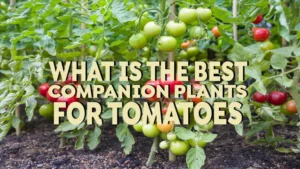





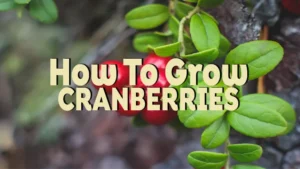


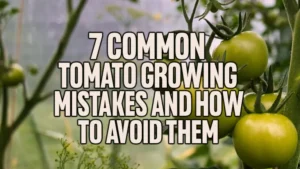
Leave your comment